Rebetiko – The Greek Blues – The Music of Life

Four Rebetes
From left to right – Stratos Payioumides, Markos Vamvakaris, Batis, and Anestis Dhelias.
Recently my daughter bought me the book, published for the first time in English:
“Markos Vamvakaris, the man and the bouzouki”
An autobiography by Noonie Minogue.

Markos Vamvakaris : The Man and the Bouzouki. Autobiography by Noonie Minogue
I couldn’t put it down; I was in there, living alongside Markos Vamvakaris, father of rebetiko, this book was my inspiration for this post.
Here is the whole wonderful story behind the music.
What is rebetiko?
Rebetiko, a subculture, appeared around The Mediterranean, usually in coastal towns, around the early 1900s, it’s a genre of music generally associated with poverty, the lower class, crime, drink, prostitution and drug addiction.

Chasiklides. – Hashish smokers.
Performers of rebetiko (The composers, players and singers) were known as ‘rebetes’, meaning rebellious, misguided or disobedient, a Greek word related to “Manghes” someone with no respect for authority, someone anti-establishment.

Rebetes
Rebetiko music was played in “Tekes” (A Turkish word, originally meaning a monastery for Dervishes) hash dens, usually a side room off a coffee house or taverna, here the rebetes went to smoke their nargiles and sing “Chasiklidika”; songs dedicated to the rituals of hashish smoking.
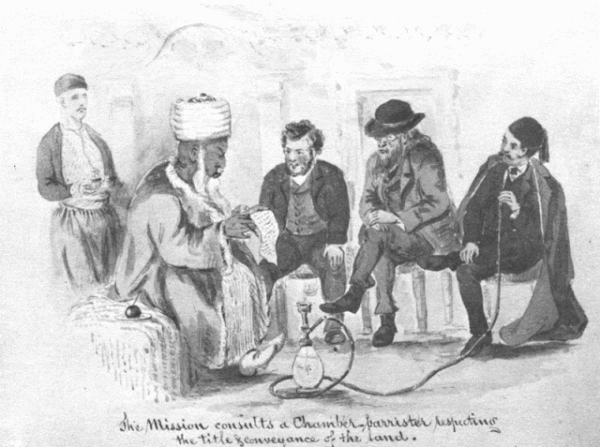
Hookah shop in Ottoman Empire – Theophilus Waldmeir. 1832-1915
A classic example of a rebetiko group is a two-stringed violin, oud ( A pear-shaped stringed instrument commonly used in Middle Eastern music) and santouri, (A stringed instrument played with small, soft hammers) but as yet, no bouzouki, which didn’t appear in rebetiko groups until the late 1920s

Greek children at music lesson learning to play traditional santouri stringed instrument, in Agiassos on Lesvos Island in Greece
Turkish influence
Rebetes sang about their lifestyle, about what they knew, what they had experienced, of family troubles, a nagging wife, being jobless, about being totally and crazily in love, about drugs, drink, gambling and about death, in short, they sang about life.

Rebetes, smoking hashish in a “Teke”
Some rebetiko songs were rather mournful, sung with a sad note, songs known as “Amanades”, from the word “Aman”, something similar to the English word “Alas”
As a result of the “Amanades” music cafes named “Café-Aman” sprung up, in the larger cosmopolitan cities of Thessaloniki, Volos, Aivali and Smyrna.

Aivali. Asia Minor – Before 1922 an entirely Greek town,
After the fall of Smyrna, known as “The Catastrophe of Smyrna” (1922), over a million Greek refugees poured into Greece when the forced population exchange was put into action in 1923 (Most of the Muslim population of Greece was sent to Turkey).

The Great fire of Smyrna –1922 – “The Catastrophe” – View from an Italian ship
The refugees from Asia Minor mostly settled around Athens and Piraeus, where they were treated as outcasts and in the same situation as the vagabond rebetes, they soon joined forces and “Smyrnaica”, a Turkish style of music, became popular.
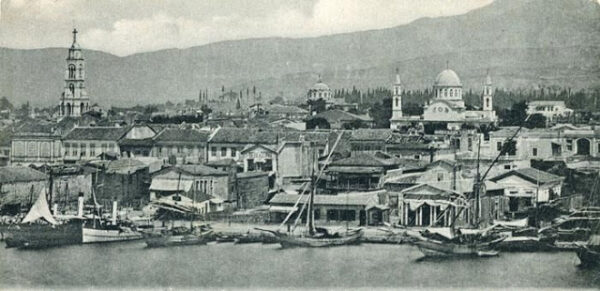
A view of Smyrna (Izmir, Turkey) – Saint Fotini on the left – C. 1900
Performers
More and more female singers were working their way into this previously male dominated scene; one of the most famous was was Rosa Ezkanazi.
Rosa Ezkanazi’s first mentor was Panayotis Toundas, himself an Asia Minor refugee and one of the most successful record producers Greek-language recording has ever known.
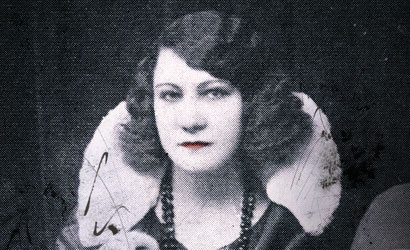
Rosa Ezkanazi – Refugee from Asia Minor – The most popular singer of the 20s and 30s
Another famous “Rebetissa”; the female form of rebetes (a rebetiko singer), was Marika Ninou, an Armenian-Greek rebetiko singer.
Marika Ninou recorded a total of 174 songs, 119 of these as lead singer.

Marika Ninou – 1918 – 23 February 1957 – ‘Rebetissa’
Markos Vamvakaris

Markos Vamvakaris – “Patriarch of rebetiko”
A decade or so after the success of the diverse “Smyrnaica” came the revival of the old, Greek style rebetiko, lead by Markos Vamvakaris from the Greek island of Syros, who today is known as the “Patriarch” of rebetiko.
With his bouzouki and baglama, Vamvakaris revamped rebetiko, taking it to heights never imagined.
Mikis Theodorakis, remarked:
“We are all but branches of a tree, Markos is that tree”
The home of Markos Vamvakaris is now a museum, dedicated to the great ‘rebetis’, in Ano Syros, a Greek island of the Cyclades, his birth place.
-e1642002038480.jpg?resize=500%2C333&ssl=1)
House, and now museum, of famous ‘rebetis’ – Markos Vamvakaris – in Ano Syros – Cyclades Greece
Bouzouki, baglama, vocals and dances
The Bouzouki, from the Turkish word “Bozuk”, meaning broken, is a part of the long-necked lute family, similar to the pandouris, which is believed to have been in existence in ancient Greece, originally having only three strings, it was the first fretted instrument, and is considered the forerunner of the lute.
The trichordo bouzouki, now played with a pick, was originally strummed with a feather, or a carved piece of wood.
In the 1950s, the tetrachord, a bouzouki with four pairs of strings, was introduced, as the three- string bouzouki was only good for playing rebetiko.

The Mantineia marble (4th cent BC, now exhibited at Athens Archaeological Museum), where a Pandouris is being played by a muse.
The baglamas is a smaller version of the bouzouki, making it easier to be carried and easier to hide, during the era when most rebetiko songs were forbidden.
The name of this instrument comes from the Turkish word baglama, which means bond or knot, and has three pairs of strings.

Bouziki and Baglamas – photo Titanas – Flickr
The vocals of rebetiko groups were usually male (but there are exceptions), are rough and hoarse, a short introduction, on the bouzouki, called a “Taximi” gets the “Kefi” (Good mood) going.
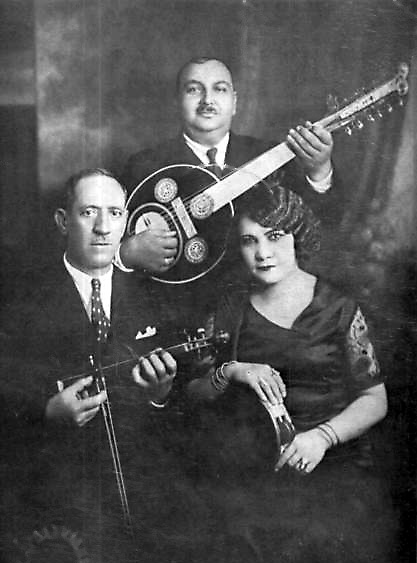
D. Semsis, A. Tomboulis, R. Ezkanazi – rebetiko group
This is Greece and of course dancing to rebetiko was more or less compulsory; and what dancing!
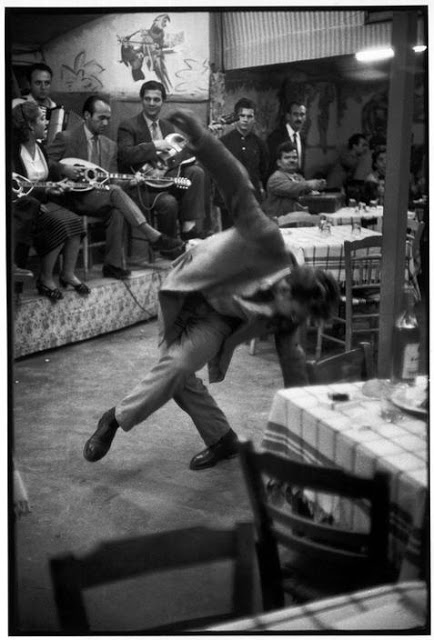
Zeibekiko dancer – Henri Cartier Bresson – Cafe Piraeus.Greece
Be it the ‘syrtos’; an ancient chain dance, still danced today, or the ‘zeibekikio’, from the Zeibek warriors of Anatolia, or the’ chasapiko’, the butcher’s dance from Constantinople, Greeks dance with meraki, with all their heart and soul
Rebetes, Manghes and Koutsavakides

“Koutsavakides” – Rebetes – Mortides
Owing to the appearance of the characters devoted to rebetiko, upright Greek society saw them as a threat.
The died in the wool, passionate ‘rebetes’, were known as “Koutsavakides”, with their distinctive walk, “Koutsa Koutsa” in Greek, rather like a crab, sporting swirly mustaches and wearing their jackets with the right sleeve left empty, a fedora on their head, singing songs of disrepute to the click, click of worry beads.

How to wear a jacket “Koutsavaki” style.
Respectable, less uptight Greek society, were slightly more tolerant of the ‘Manghes’, (a counterculture, usually working class, from urban areas of Athens, Piraeus and Thessaloniki, the nearest English equivalent to the term ‘manghas’ is wide boy, or spiv).
In fact, ‘Manghes’, with their Devil may care attitude and their street slang, along with the “Mortides” and “Dervisis”, a superior type of “Mangha”, were actually looked up to by many Greeks of the ‘Rebetiko era’.

Rebetes, Karaiskaki.1933 – Left, Vamvakaris, with bouzouki, middle, Batis, with guitar.
In 1936, the 4thAugust Regime, an authoritarian regime under the leadership of General Metaxas, came to power, and with it censorship.
This led to certain radio stations banning rebetiko songs.
It’s interesting that rebetiko was also rejected by the Greek Left, because of its “Reactionary” character and the drug references.
The rise of rebetiko
As rebetiko was on the up and up, poverty in Greece was worsening; with WWII came Nazi occupation and no sooner had that ended, Greece entered into a civil war.
Rebetiko singers poured their hearts out over the terrible and gloomy times of poverty, expressing themselves in their songs.
Leonard Cohen said:
“Music is the emotional life of most people”
He could have been talking about rebetiko.
Slowly rebetiko began to lose its bad reputation, after all, the whole of Greece Was in this together and it came to be recognised as the national music of Greece; the music of life.
Batis – Rebetiko star
By 1946 rebetiko was at its zenith, Vassilis Tsitsanis, being the top performer, now acceptable, there was an increased demand and larger venues were needed for the ever growing audience.

Vassilis Tsitsanis
Another top ‘rebetissa’ was Sotiria Bellou, who had quite a story behind her, openly lesbian, which at that time in Greece was extremely courageous of her, threw acid in the face of her abusive husband when she was only seventeen, left him and became a communist partisan.
During the occupation of Greece by the Nazis, during WWII, Sotira was captured and tortured by the Nazis and later, again captured, this time by right-wing militants during the Greek Civil War.

Sotiria Bellou
By the 1960s, the greediness of the recording industry and the temptation of commercialism were endangering the authenticity of rebetiko.
And the downfall
The downfall of rebetiko occurred when Manolis Chiotis, who is considered one of the greatest bouzouki soloists of all time, added a fourth string and plugged the bouzouki into an amplifier; ending years of tradition.
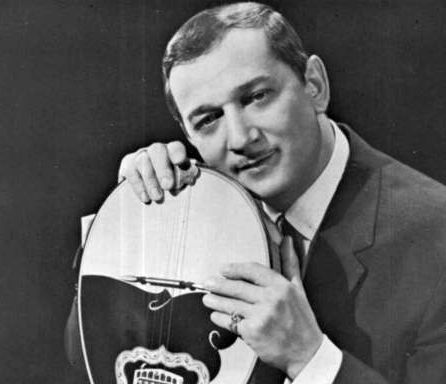
Manolis Chiotis – 1920 – 1970 – considered one of he greatest bouzouki soloists of all time.
There have been a few tries to breathe new life into rebetiko.
Manos Hadjidakis had a go when composing the soundtrack for what must be one of the most famous Greek films, starring Melina Mercuri, ‘Never on a Sunday’, and Mikis Theodorakis, another brilliant Greek composer, tried his hand with the music score for the best Greek dancer ever, ‘Zorba the Greek’, taken from by the book by Nikos Kazantzakis.
Elias Petropoulos, a major historian of rebetiko and self proclaimed “Anthropologist”, says of rebetiko;
‘The womb of rebetika was the jail and the hash den. It was there that the early rebetes created their songs. They sang in quiet, hoarse voices, unforced, one after the other, each singer adding a verse which often bore no relation to the previous verse, and a song often went on for hours. There was no refrain, and the melody was simple and easy. One rebetis accompanied the singer with a bouzouki or a baglamas (a smaller version of the bouzouki, very portable, easy to make in prison and easy to hide from the police), and perhaps another, moved by the music, would get up and dance. The early rebetika songs, particularly the love songs, were based on Greek folk songs and the songs of the Greeks of Smyrna and Constantinople’
-e1642002852482.jpg)
From left to right – Alekos Fassianos, Yasar Kemal, Elias Petropoulos, Abidin Dino -Paris 1977
This is rebetiko, songs of the working class, the downtrodden, sung from the heart, with passion
but then, what else would you expect from Greeks?
Below is a wondeful, short, animated video, written, produced, shot and Directed by Thomas Kunstler which shows a man within himself and the music who inspires his mood.
A true homage to rebetiko; reflecting the feelings of the Greek people of the 19th century, when this music of life was born.



